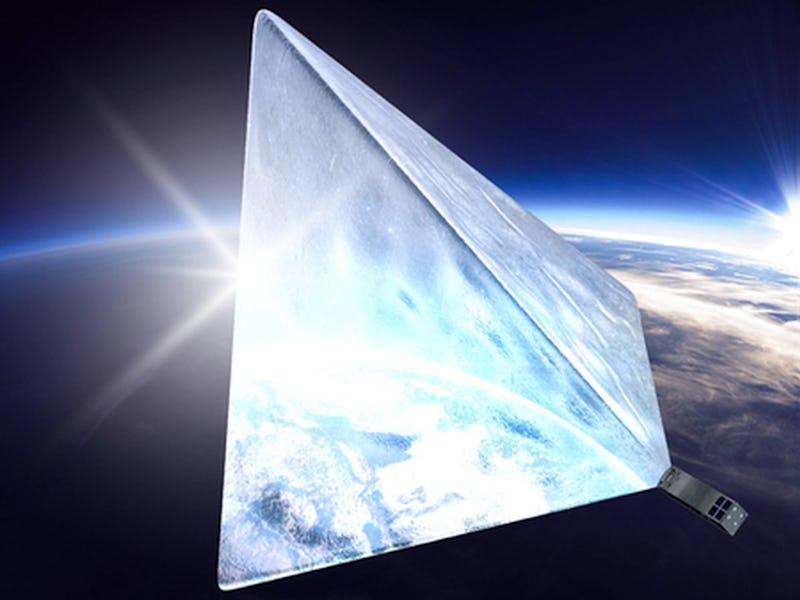Russia Is About to Put a Fake Star in the Sky Which Will Ruin Actual Stars
More artificial light pisses off astronomers.

Russian scientists are putting the finishing touches on a bread loaf-sized satellite that, once in space, will unfurl into a reflective pyramid with 170 square feet of sunlight-reflecting potential. If successful, its engineers say that it will become the brightest star in our skies, even eclipsing Sirius, a scorching blue fireball about eight and a half light-years from Earth.
“We are sending a spacecraft into orbit that will be the brightest star in the sky, visible from any point on our planet,” project leader Alexander Shaenko told Kremlin-backed Sputnik News, a thinly veiled propaganda network for the government.
The aptly named “Mayak” satellite, which translates to “beacon,” is not funded by the Russian government but by the crowdsourced efforts of space enthusiasts on Boomstarter, which, as of Friday, had reached the equivalent of nearly $34,000, apparently enough to pack it on the July 14 launch of the Soyuz rocket. While Mayak’s financial backers may be enthused about the prospect of the ultra-radiant space pyramid, some astronomers aren’t pleased with the soon-to-appear artificial star, which will add another flare to an already light-polluted sky.
“We fight so hard for dark skies in and around our planet,” Nick Howes, an astronomer and former deputy director of the Kielder Observatory in Northumberland, England, told IFLScience. “To see this being potentially ruined by some ridiculous crowdfunded nonsense makes my heart simply despair.”
A representation of Earth's newest star, the pyramidal Mayak.
Human development, while allowing us the benefits of modernity and urban life, is already doing a fine job of filling Earth’s night sky with an artificial glow, which can be hundreds of times brighter than the natural, star-lit sky, according to the International Dark-Sky Association. In urban areas like New York and Los Angeles, the stars are unquestionably pathetic, and the great spiral arm of the Milky Way galaxy is nowhere to be seen, making places with dark sky distinctions especially attractive places for cosmic viewers.
Hawaii’s 13,803-foot volcano Mauna Kea — one of the premier universe-viewing sites on Earth and home to some of the world’s largest and most sophisticated telescopes — battles light pollution from the civilization below, but the local government has made a determined effort to keep the lights low. A city ordinance requires that outdoor lights use low-pressure sodium lamps that emit a yellow-orange glow, which astronomers can filter out, keeping their galactic observations as pure as possible.
Russian engineers hold the bread loaf-sized Mayak satellite. Inside is the folded pyramid, made from an ultra-thin Mylar material.
With such light-minimizing efforts, it’s little surprise that the Russian space beacon frustrates scientists, although the Mayak engineers have included another objective for the satellite. They plan to test a novel braking system, which could one day allow satellites to re-enter Earth’s atmosphere rather than sending a rocket to fetch a reusable satellite. Still, this doesn’t rationalize the need for a luminescent pyramid, although it may serve the purpose of getting the Russian public stoked about space.
“We want to show that space exploration is something exciting and interesting, but most importantly that today it is accessible to everybody who is interested,” said Mayak’s program director Shaenko. An associated app will allow users to follow the satellite’s whereabouts in case they can’t see the brightest star in the sky, which will also happen to be moving.
There are, however, a plethora of satellites that can be seen zipping through the night sky already, most noticeably the International Space Station, which is larger than a football field. NASA encourages everyone to look up when it’s passing overhead to remind folks of the global endeavor to advance human exploration, thus negating the need to launch an obnoxious artificial torch into Earth’s sky.